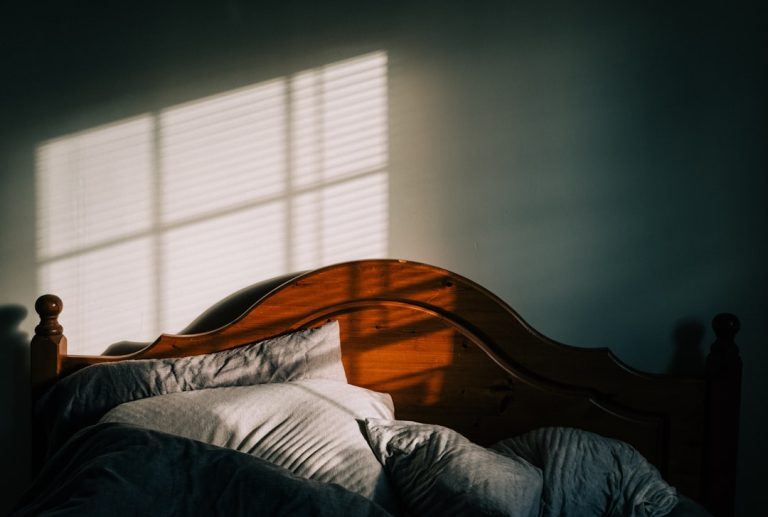In our always-on world, the glow of screens often follows us right into bed, disrupting the natural rhythm our bodies crave for true rest. We scroll, we stream, we check just one more email, and then wonder why sleep feels so elusive. But what if there was a way to gently ease your mind and body away from the digital buzz, mimicking the natural transition from day to night? That’s exactly what my ‘digital sunset’ routine is all about – a conscious, calming ritual designed to help you reclaim your evenings and, most importantly, unlock truly restorative sleep. It’s not about deprivation; it’s about a mindful shift towards tranquility.
The Fading Light: Why Our Screens Steal Our Slumber’s Peace
Before we dive into building your own digital sunset, let’s understand why this transition is so vital. Our bodies operate on a powerful internal clock called the circadian rhythm. This rhythm dictates when we feel awake and when we feel sleepy, largely influenced by light. When the sun sets, our brains naturally begin to produce melatonin, the hormone that signals it’s time to wind down for sleep. This is where our modern digital habits throw a wrench in the works.
The screens we’re glued to—phones, tablets, computers, TVs—emit a significant amount of blue light. While blue light is beneficial during the day for boosting attention and mood, exposure to it in the evening is a major disruptor. It tricks our brains into thinking it’s still daytime, suppressing melatonin production and pushing back our natural sleep signals. This isn’t just about feeling a bit more awake; it can delay sleep onset, reduce the quality of our sleep, and even impact our overall health and cognitive function over time. The constant stream of notifications, stimulating content, and the mental engagement required by digital tasks further escalate stress and keeps our minds racing, making the leap into peaceful slumber feel like an impossible feat.
Drawing the Curtains: Defining Your Personal Digital Sunset Horizon
My digital sunset isn’t a one-size-fits-all prescription; it’s a flexible framework you adapt to your life. Think of it as creating a clear boundary between your active, digitally-connected day and your calm, pre-sleep evening. The core idea is to gradually dim or completely cut off your interaction with stimulating digital devices for a specific period before you intend to go to sleep. This isn’t just about turning off your phone; it’s about shifting your entire evening mindset.
The “horizon” refers to the specific time you choose to initiate this wind-down. For many, a 60 to 90-minute buffer before bedtime is a great starting point, though some find 2-3 hours even more effective. If you aim to be asleep by 10 PM, your digital sunset might begin at 8:30 PM. This period becomes sacred—a time dedicated to analogue activities that soothe rather than stimulate. It’s about consciously choosing to step away from the endless scroll and embrace the quiet of your own thoughts, preparing your mind and body for the deep, restorative sleep it deserves. This horizon is your personal line in the sand, marking the end of your digital day.
Crafting Your Evening Wind-Down: Practical Steps to Dim the Digital Glow
Implementing your digital sunset involves a series of intentional choices that gently guide your body towards sleep. Here’s how I approach it, with suggestions for you to adapt:

Setting Your Sunset Alarm: The Initial Disconnect
- Choose Your Time: As mentioned, pick a realistic time 1-2 hours before your desired bedtime. Set a recurring alarm on your phone (yes, ironically) to signal the start of your digital sunset.
- The Grand Farewell (for now): When the alarm rings, it’s time to put away your primary devices. This means phones, tablets, and laptops. If your work requires late-night computer use, try to wrap it up at least an hour before your sunset time.
- Designate a “Charging Station”: Don’t bring your phone into your bedroom. Create a charging station in another room—the kitchen, living room, or a hallway. This physical separation is incredibly powerful for breaking the habit of late-night checking.
- Adjust Your Tech: If you absolutely must use a screen (e.g., for smart home controls), ensure it has a “night mode” or “blue light filter” activated. Dim the brightness significantly.
Beyond the Blue Light: Enriching Your Pre-Sleep Hours with Analog Comforts
Once the screens are off, the real magic of the digital sunset begins: filling those newly freed hours with activities that genuinely promote relaxation and well-being. This is your chance to reconnect with yourself and prepare for sleep without digital distractions. Think of it as a holistic approach to sleep hygiene.
Embracing the Quiet: Activities to Soothe Your Mind
- Read a Physical Book: There’s something uniquely calming about turning real pages. Choose fiction, a comforting non-fiction topic, or poetry. Avoid anything too thrilling or thought-provoking that might keep your mind racing.
- Journaling or Reflection: Spend 10-15 minutes writing down your thoughts, worries, or gratitudes from the day. This can be incredibly therapeutic for clearing your mind and processing emotions before bed.
- Listen to Calming Audio: This could be a podcast (non-stimulating), an audiobook, ambient music, nature sounds, or guided meditation. Just ensure it’s audio-only and ideally played through a dedicated speaker, not a device with a bright screen.
- Mindful Movement: Gentle stretching, yoga, or simple breathing exercises can release physical tension and calm your nervous system. Explore mindfulness for relaxation techniques.
Sensory Comforts: Indulging Your Body
- Warm Bath or Shower: The drop in body temperature after a warm bath or shower signals your body to prepare for sleep. Add Epsom salts or essential oils like lavender for an extra calming effect.
- Herbal Tea: A non-caffeinated herbal tea (chamomile, valerian, passionflower) can be a comforting ritual. Avoid sugary drinks or anything that might cause you to wake up to use the restroom.
- Prepare for Tomorrow: Lay out your clothes for the next day, pack your lunch, or tidy up a small area. Tying up loose ends can reduce morning stress and help you feel more at ease as you head to bed.
- Connect with Loved Ones (in person): If you share your home, spend quality time talking, playing a board game, or simply enjoying each other’s company without digital interruptions.
Keeping the Stars Aligned: Sustaining Your Digital Sunset for Lasting Rest
Starting a digital sunset routine is one thing; making it a consistent, deeply ingrained habit is another. It takes patience, self-compassion, and a bit of strategic planning. Remember, the goal isn’t perfection from day one, but progress towards more restful nights.
Building Consistency, One Evening at a Time
- Start Small and Build Up: If 90 minutes feels overwhelming, begin with 30-45 minutes of screen-free time. Once that feels comfortable, gradually extend it.
- Identify Your Triggers: What makes you reach for your phone in the evening? Is it boredom, habit, or a genuine need? Awareness is the first step to changing the behavior.
- Create a Sacred Space: Design your bedroom as a sanctuary for sleep. Keep it dark, cool, and quiet. Remove TVs, and avoid using your bed for anything other than sleep and intimacy.
- Be Kind to Yourself: You’ll have evenings where you slip up, and that’s perfectly normal. Don’t let one missed sunset derail your efforts. Acknowledge it, learn from it, and recommit the next evening.
- Communicate Your Intentions: If you live with others, let them know about your digital sunset. They can support you and even join in, making it a shared family routine.


